Planting an outdoor garden is a great way to add some beauty to your home and supply you with fresh fruits and vegetables. But have you ever considered planting a Monstera outside? Monsteras are becoming increasingly popular in the interior design space, but did you know that they can also thrive outdoors if given the proper environment? In this blog post, we’ll explore whether it’s possible to plantMonstera outside and discuss how best to care for them when planted in such conditions. We’ll look at optimal soil types, temperatures, sun exposure levels—everything you need to give your Monstera the chance of becoming part of your beautiful outdoor oasis!
Monstera
Monstera, also known as Swiss cheese plant, is a type of flowering plant native to the tropical regions of the Americas. The genus Monstera is part of the Araceae family and known for its unique, large, perforated leaves that have distinct, natural holes or cuts—hence the nickname.
The name Monstera comes from the Latin word for “monstrous,” referring to the size that this plant can grow in its native habitats—some leaves can reach up to a meter in diameter! The most common type of Monstera is Monstera deliciosa, with “deliciosa” referencing the pineapple-like fruit it bears in the right conditions.
Its origins can be traced back to the rainforests of Central and South America, where it grows in abundance, particularly in regions like southern Mexico, Panama, and Costa Rica. [1] In these natural habitats, the Monstera is a robust climber, using its aerial roots to latch onto trees, climbing high into the rainforest canopy.
The Monstera’s unique adaptive qualities, along with its exotic aesthetic appeal, have seen it transition from the rainforest floor to become a popular addition in homes and gardens around the world. Despite its tropical origins, with the right care and environment, it can be grown in a variety of climates, both indoors and outdoors.
So, whether you’re an experienced gardener or a beginner looking to cultivate your green thumb, the Monstera is a stunning, unique plant that offers a touch of tropical ambiance to any setting.

Characteristics & Types
Monstera plants are characterized by their large, glossy, heart-shaped leaves with unique splits and holes, mimicking Swiss cheese, hence their nickname. These perforations increase as the plant matures, a process called fenestration. The leaves can range from bright green to darker hues depending on light exposure.
Monstera’s aerial roots are another striking feature. In wild settings, these roots latch onto trees and structures, helping the plant climb upwards of 20 meters. These roots also absorb water and nutrients, supplementing the main root system.
Monstera plants can bear unusual fruits, which resemble green, scaly cones. They’re edible and taste like a mix of pineapple and banana once fully ripe. However, it’s important to note that every other part of the plant is toxic if ingested, so caution is necessary, especially in households with pets or young children. [2]
There are several types of Monstera plants, each with their distinct features:
- Monstera Deliciosa: The most common type, characterized by large, deeply split leaves. It’s also the variety that bears the pineapple-like fruit mentioned earlier.
- Monstera Adansonii: Known for its smaller, more profusely perforated leaves compared to the deliciosa. It’s often called the Swiss cheese vine.
- Monstera Borsigiana: A variation of M. deliciosa, but grows faster and has a smaller stature, making it better suited for indoor cultivation.
- Monstera Obliqua: Also called the ‘Holy Grail’ of plant collectors due to its rarity. It’s characterized by leaves that have more holes than leaves!
- Monstera Dubia: Recognizable by its small, heart-shaped leaves that lie flat against the surface it’s climbing, creating a shingled appearance.
Popularity of Monstera as an outdoor decoration
Monstera plants have surged in popularity as a prime choice for outdoor decoration. The aesthetic appeal of their unique, split or perforated leaves exudes a tropical, exotic charm that can instantly transform gardens, terraces, or balconies. Moreover, they are excellent climbers, able to wrap around trellises, fences, or other garden structures, adding a layer of verdant beauty and sophistication.
Beyond their visual allure, Monstera plants are quite hardy and adaptable, able to thrive in a variety of climatic conditions. They prefer indirect light but can tolerate less ideal conditions, making them relatively easy to care for. They can even flourish in containers, allowing for greater flexibility in their placement.
Furthermore, Monstera plants provide an ecological bonus, their broad leaves offering shelter and habitat for a variety of small creatures. This attribute makes them a wonderful addition to gardens aiming to promote local biodiversity.
Thus, due to their unique beauty, resilience, and versatility, Monstera plants have carved a niche in the world of outdoor decoration, earning the love and appreciation of garden enthusiasts and professional landscapers alike.
Considerations Before Planting Monstera Outside
Before planting a Monstera in your outdoor space, several factors should be taken into consideration. First, the plant’s lighting needs: Monsteras prefer indirect sunlight and can get sunburned if exposed to direct, harsh light. Thus, they should be positioned in a spot that gets bright, but diffused light.
Second, consider the plant’s need for space. Monsteras are known for their lush, expansive growth, which means they can quickly outgrow compact areas. They may also need support structures to climb on, like trellises or stakes.
Third, the temperature tolerance of Monsteras should be kept in mind. They are tropical plants and are not frost-tolerant. If you live in an area where temperatures drop below 50°F (10°C), you’ll want to bring your Monstera indoors during the colder months.
Lastly, Monsteras prefer well-draining soil to prevent waterlogging and root rot. Consider mixing perlite or orchid bark into your potting mix to increase drainage. With these factors in mind, you can create an environment where your Monstera will not only survive, but thrive.
Steps to Successfully Plant Monstera Outside
Now that we’ve discussed the prerequisites for planting a Monstera plant outdoors, let’s delve into the step-by-step process on how to successfully introduce this tropical beauty into your garden. Following these steps will ensure a healthy and vibrant Monstera that adds a touch of exotic appeal to your outdoor space.
Transplantation Timing
The ideal time to transplant a Monstera plant outdoors is during the late spring or early summer. This occurs during the plant’s active growth period, when milder temperatures and longer daylight hours facilitate a faster recovery following the transplantation process. [3] Make sure you acclimate your Monstera to its new environment by initially placing it in a shaded area and gradually moving it to a location with brighter, indirect light. It’s also important to keep an eye out for any potential pests or diseases that could harm your Monstera during this time. Taking these considerations into account will set your Monstera up for successful outdoor living.
The time and day of transplantation play a critical role in the successful outdoor adaptation of your Monstera. It’s recommended to transplant your Monstera during the cooler parts of the day, ideally early in the morning or late in the afternoon. This minimizes the plant’s exposure to harsh sunlight and heat, which could cause transplant shock, a state of shock plants go through when moved from a small pot to a large space or garden.
Transplanting on a cloudy day can also be beneficial as it provides a natural shield from the intense sun rays. Moreover, consider transplanting your Monstera on a day when no harsh weather conditions like strong winds or heavy rain are predicted. Such conditions can damage the plant and make the transplantation process more challenging.
Location Selection
Choosing the right location for your Monstera is paramount to its overall health and growth. Location selection impacts the amount of sunlight the plant receives, its exposure to wind, and even the quality of soil it’s planted in. The ideal spot for a Monstera is one that gets plenty of bright, indirect sunlight. A location with eastern exposure is often ideal, as it allows the plant to bask in the gentler morning sun.
Wind exposure should also be considered. A spot that’s too windy can stress the plant and cause dehydration. A location with a natural windbreak, such as a fence or wall, can help shield your Monstera from strong gusts.
Finally, consider the quality of the soil. Monstera plants thrive in soil that drains well, which helps prevent the occurrence of root rot. If the chosen area has soil that is clayey or compact, there might be a need to enrich it with organic material to enhance both the structure and drainage.
Soil Preparation
Soil preparation is a crucial step in transplanting your Monstera as it directly influences the health, growth, and longevity of the plant. Choosing the right soil involves considering the specific needs of your plant. They prefer a loose, well-draining mix that’s rich in organic matter. They need soil that holds enough water for their roots to absorb, but not so much that it becomes waterlogged and leads to root rot.
One of the best soil mixes for a Monstera is a blend of peat, perlite, and a bit of compost. The peat provides acidity and retains moisture, the perlite ensures good drainage, and the compost enriches the soil with organic matter, supplying the necessary nutrients for the plant.
When preparing the soil, make sure it’s loose and aerated. You can accomplish this by breaking up any large clumps and mixing in the amendments thoroughly. Doing so creates an optimal environment for the Monstera’s roots to spread out and absorb nutrients and water efficiently. Proper soil preparation sets the foundation for a healthy, thriving Monstera.
Transplantation Technique
Once you have the ideal location and soil prepared, you can begin the transplanting process.
- Prepare the Planting Hole: Excavate a hole that is equivalent in depth to the root ball of your plant. This generous space allows the roots to comfortably expand in their new environment.
- Place the Plant: Take out the Monstera from its present container, ensuring the roots remain undamaged. Place the plant in the designated location, ensuring that the top of the root ball aligns with the soil’s surface.
- Backfill the Hole: Place the soil in the hole, gently firming it around the root ball as you fill. Remember not to compact it excessively – you want the soil to provide sufficient support for the plant while allowing the roots to penetrate easily.
- Water Extensively: It is crucial to water the plant. This process aids in the soil settling around the roots and ensures the plant receives the necessary hydration to adapt to its fresh surroundings.
- Monitor the Plant: During the initial weeks following the transplantation, it is important to closely monitor the Monstera plant. Ensure it’s receiving enough water and that it’s adapting well to its new surroundings. If you notice any signs of distress, such as yellowing leaves or wilting, it may require additional care.
Keep in mind that relocating a plant can be a stressful experience for it. Nonetheless, with sufficient preparation and appropriate nurturing, your Monstera plant will thrive in its new environment.
Watering and Mulching
Watering and mulching are crucial aspects of plant care that significantly contribute to a plant’s overall health. These practices are particularly important for Monstera plants, which thrive in a well-hydrated and well-protected environment.
Watering a Monstera should be done carefully and with consideration of the plant’s specific needs. Monstera plants prefer soil that is somewhat moist but never waterlogged. As a general guideline, it is advisable to ensure the top layer of soil is allowed to dry out between waterings to prevent plagiarism. Watering your plant approximately every 1-2 weeks is typically recommended; however, it might be necessary to increase the frequency during periods of elevated temperature and decreased humidity.
Mulching, on the other hand, is a practice often overlooked by novice gardeners, but it’s essential for maintaining soil moisture and improving soil quality. Mulch acts as a barrier, protecting the soil from harsh weather conditions, and it helps to retain moisture, reducing the frequency of watering required. To mulch your Monstera, spread a 2-inch layer of organic mulch (like compost, bark chips, or straw), but be careful not to pile it against the stem as this can encourage rot. Remember to replace the mulch as it decomposes over time.
To promote healthy growth and vigor in your Monstera, you can establish an ideal environment by consistently providing the appropriate amount of water and mulch. This way, the plant’s unique, aesthetic leaves can reach their full, lush potential, adding a touch of tropical beauty to your home or garden.
Caring for Outdoor Monstera
Monstera plants, commonly referred to as Swiss Cheese Plants, possess distinct demands that exhibit slight variations when cultivated in outdoor environments. Here are some essential tips and lifehacks to ensure your outdoor Monstera thrives:
- Positioning your Monstera: While plants enjoy plenty of light, they should be kept away from direct sunlight as it can scorch their leaves. Search for a location with ample, gentle sunlight, such as under the shade of a large tree.
- Temperature: Monsteras are tropical plants and do not handle colds well. If temperatures in your area drop below 50°F (10°C), it’s recommended to bring your Monstera indoors.
- Pruning: Monstera plants can grow quite large. Regular pruning helps to control their size and promote fuller growth. Prune any yellow or brown leaves and any aerial roots that have become excessively long.
- Pest Control: Monsteras can occasionally attract pests like aphids and mealybugs. Keep an eye out for these and tackle any infestations with a mild insecticidal soap.
- Fertilization: To help your Monstera thrive during the growing season (spring and summer), it is recommended to fertilize it monthly. Choose a balanced fertilizer, but be sure to dilute it adequately to prevent any harm to the roots.
Addressing Potential Challenges
Despite your best efforts, you may encounter some challenges while caring for your outdoor Monstera. One of the most common issues is leaf yellowing, which could be a result of overwatering, underwatering, or exposure to too much light. Secondly, leaf browning or curling could indicate a lack of humidity, as Monsteras flourish in environments with high humidity.
Another significant challenge is maintaining the right temperature. Since Monsteras are tropical plants, they struggle to survive in cold climates and can suffer from frost damage. Hence, monitoring temperature fluctuations becomes crucial, especially during winters.
In terms of pest control, while Monsteras are not particularly prone to pest infestation, occasional attacks from aphids, mealybugs, and spider mites can occur. If left uncontrolled, these pests can cause significant damage to your plant.
Lastly, fertilization can be a tricky area. While Monsteras need nutrients to grow, excessive fertilization can lead to mineral build-up in the soil, which can cause root burn or other complications. Therefore, it’s essential to use a diluted solution and to flush the soil regularly to prevent such issues.
Decorative Ideas for Home and Garden
Monstera plants, with their unique and dramatic foliage, can serve as a stunning statement piece in your home or garden. Here are a few decorative ideas:
- Indoor Vertical Garden: Grow your Monstera on a moss pole or trellis to create a lush, tropical feel in your living room or office space.
- Outdoor Plant Wall: If you have a fence or blank wall in your backyard, use it to display your Monstera plants. They can create an impressive green wall that adds a touch of nature to urban settings.
- Hanging Planter: Monsteras can also be trained to grow downwards, making them an excellent choice for hanging planters. This can add a unique touch to your balcony or pergola.
- Monstera Centerpiece: A large Monstera plant can serve as a striking tabletop centerpiece. Pair it with complementary smaller plants around its base for a layered look.
- Bathroom Decor: Given Monsteras’ love for humid environments, they can be an ideal addition to your bathroom decor. The greenery can provide a serene, spa-like feel.
Remember, the placement of your Monstera not only affects its health but also your enjoyment of the plant. Experiment with different locations to find the perfect spot that complements your space and enhances the plant’s aesthetic appeal.
Frequently Asked Questions
Can I put my Monstera outside?
Yes, you can put your Monstera outside. However, it’s crucial to ensure that the plant is not exposed to direct sunlight for extended periods, as this can scorch the leaves. Monsteras prefer a shaded or partly shaded location. Also, remember to bring your plant indoors if the temperature drops, as Monsteras are not frost-tolerant. They thrive best in warm, humid conditions. During the warmer months, being outdoors can actually be beneficial for your Monstera, promoting faster growth and more vibrant foliage.
Can I plant my Monstera in the garden?
Yes, you can plant your Monstera in the garden, given that the climate is right. Monsteras originate from the tropical rainforests of Central and South America, so they prefer warm, humid conditions. They can do well in the ground in USDA Hardiness Zones 10-12. If you live in an area with colder winters, you might want to keep your Monstera in a container so that you can move it indoors during the colder months to protect it from frost damage. Always ensure that the soil is well-draining to prevent waterlogged conditions, which can lead to root rot.
Can you plant Monstera outside the UK?
While it’s possible to plant Monstera outside in the UK during the warmer months, it’s important to remember that this is a tropical plant that doesn’t tolerate frost. UK weather can be unpredictable and even summer nights can get quite cool. Therefore, it’s usually better to keep your Monstera in a container so you can bring it indoors when the weather turns cold. If you do choose to plant your Monstera outside, be sure to choose a sheltered location that mimics its natural rainforest habitat – dappled light and well-draining soil are essential. But remember, as soon as temperatures start to drop, you’ll need to bring your Monstera back indoors.
How tall can Monstera grow outside?
When planted outside in optimal conditions, Monstera plants can reach impressive heights. In its natural habitat in the rainforests, Monstera can grow up to 20 meters tall. However, in a garden setting, this tropical beauty typically grows to around 2-3 meters. Keep in mind that this growth can be influenced by various factors such as the plant’s age, the specific variety, and the care it receives. Monsteras are known for their lush, spreading growth, so ensure you have ample space for your plant to thrive.
Useful Video: Grow Monstera Deliciosa Outdoors
Conclusion
In closing, the popularity of monstera as outdoor furniture and decoration is one that should be celebrated! With quick and proper care, outdoor planting could be a fun activity this summer. With beautiful, full-grown Monsteras, you can add to a lively atmosphere whether it be on a patio or in your own garden. If you are looking for the perfect way to brighten up your outdoor living space this summer, consider adding some Monsteras! All that’s needed is some determination and dedication; with these qualities, and the tips laid out in this blog post, you can achieve the lushness of an outdoor Monstera décor.
References:
- https://foliagefriend.com/where-does-monstera-grow-naturally/
- https://simplifygardening.com/do-monstera-bear-fruit/
- https://www.evergreenseeds.com/repotting-monstera/






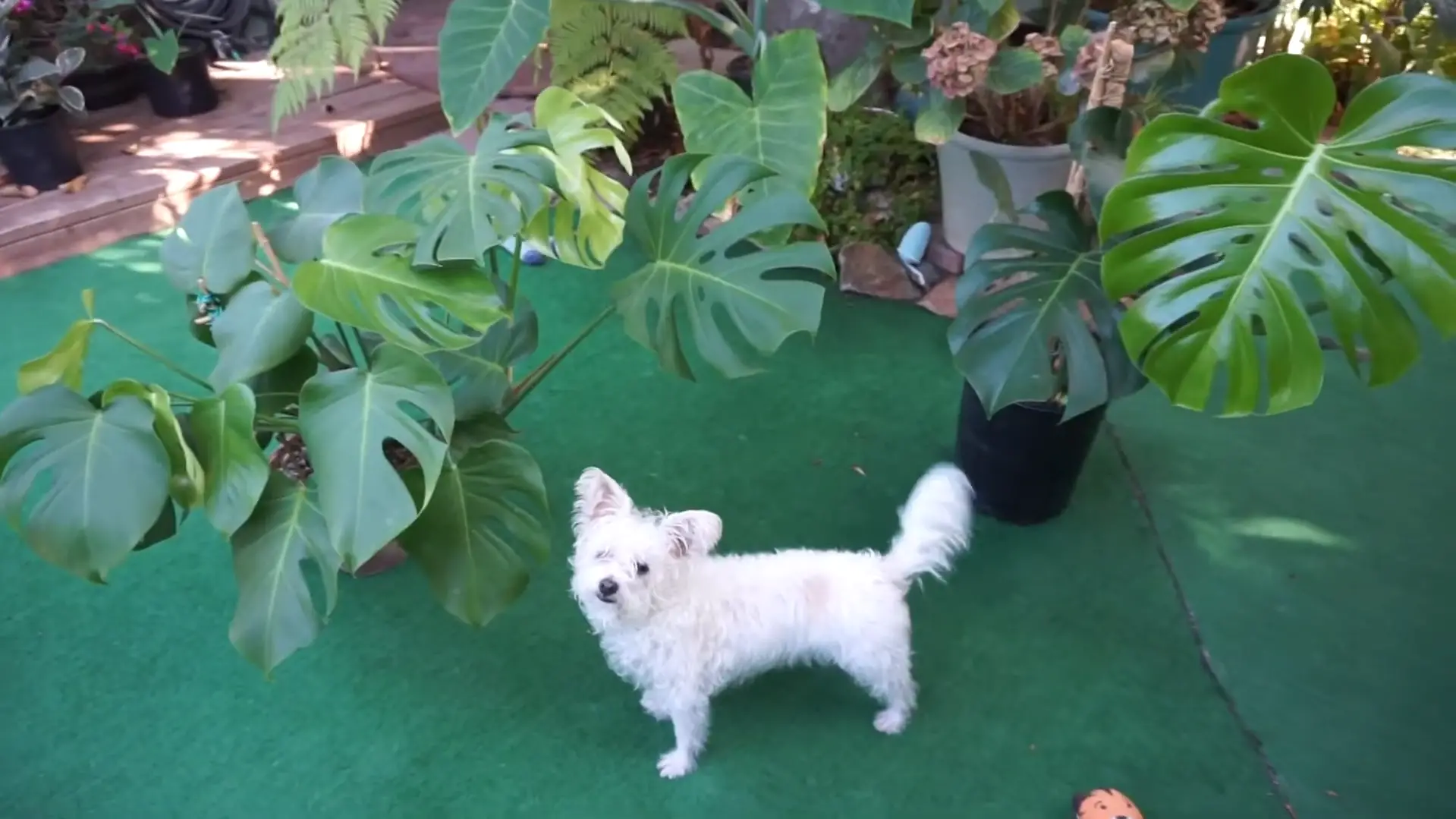
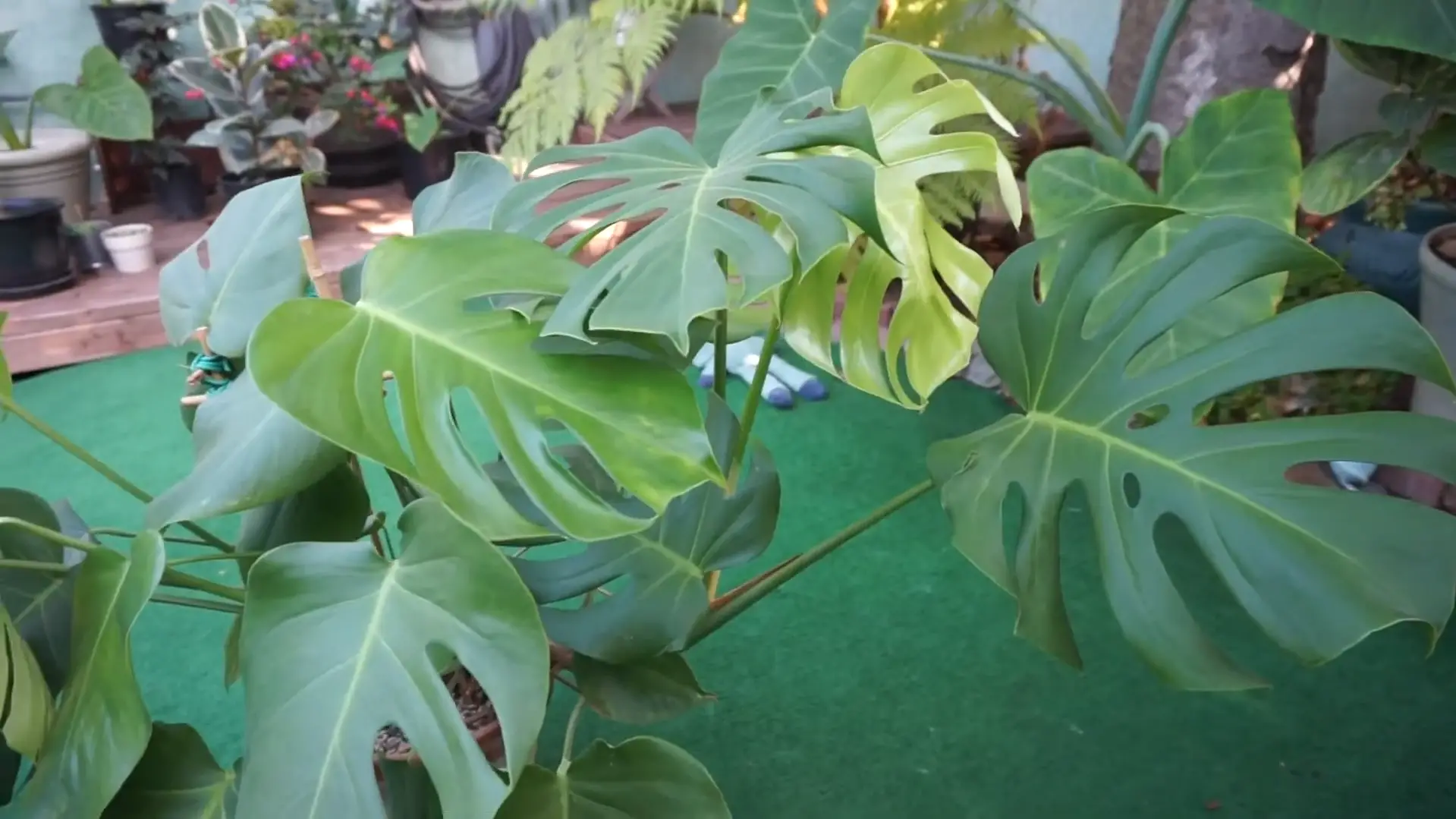
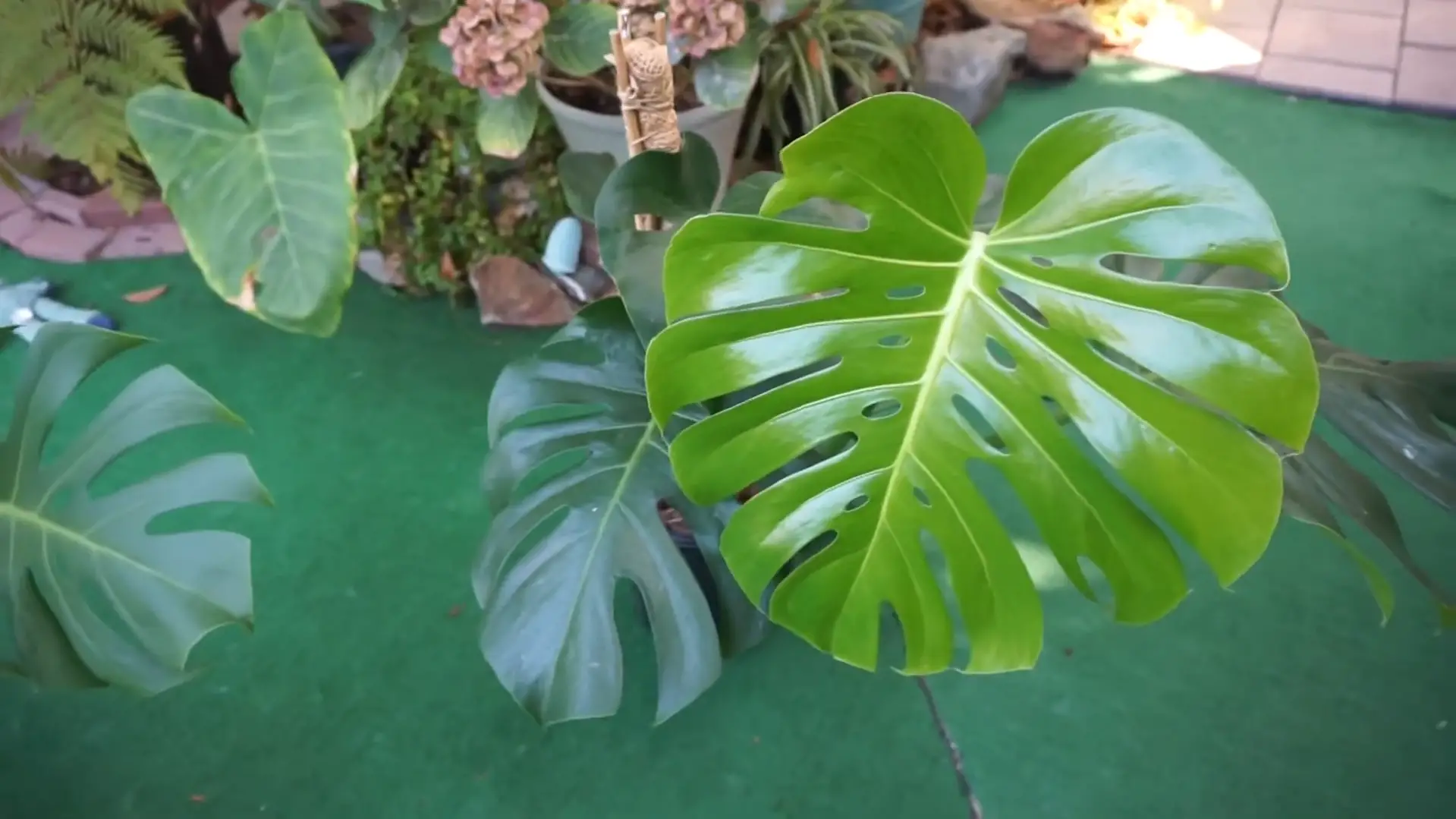
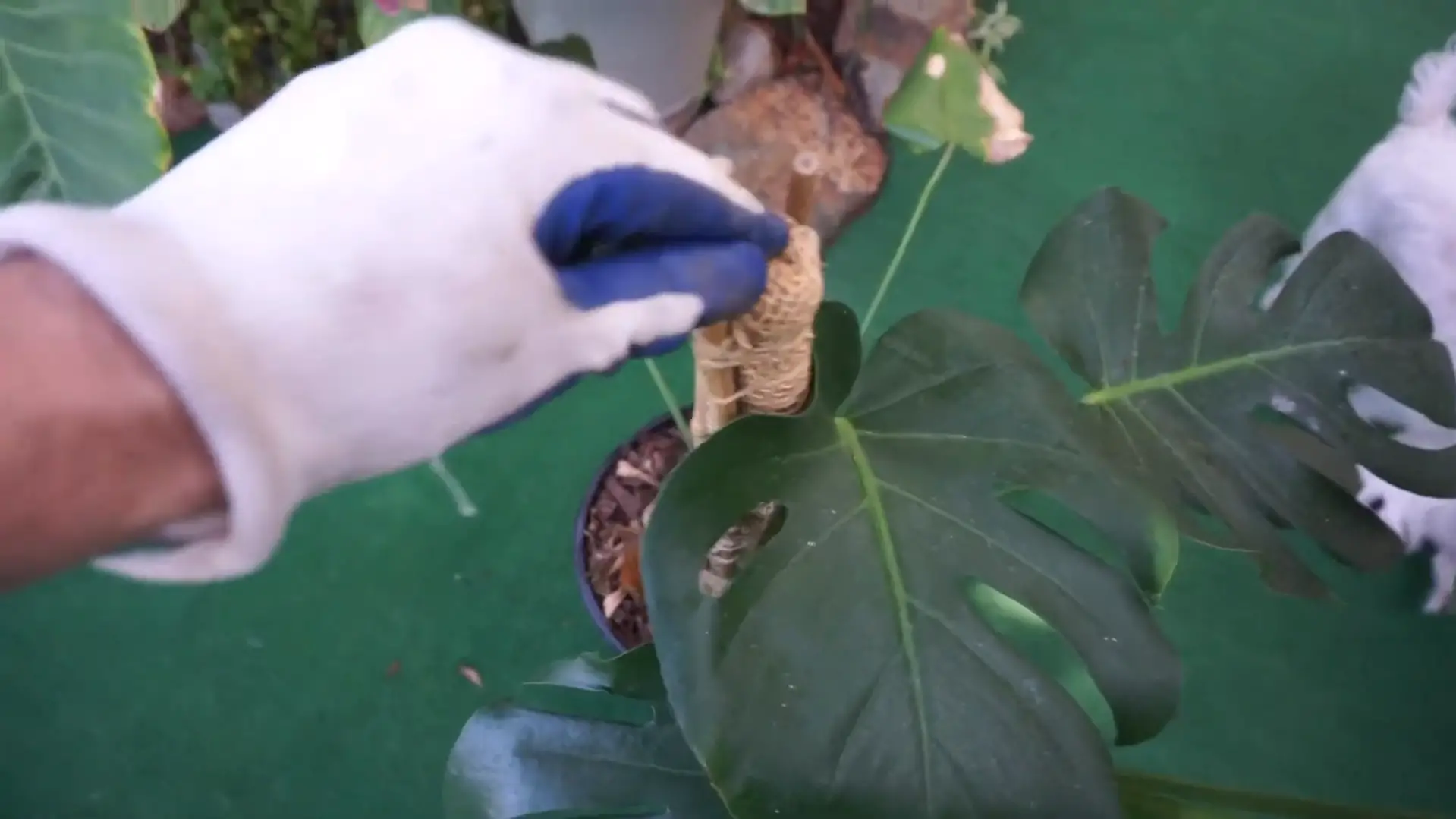
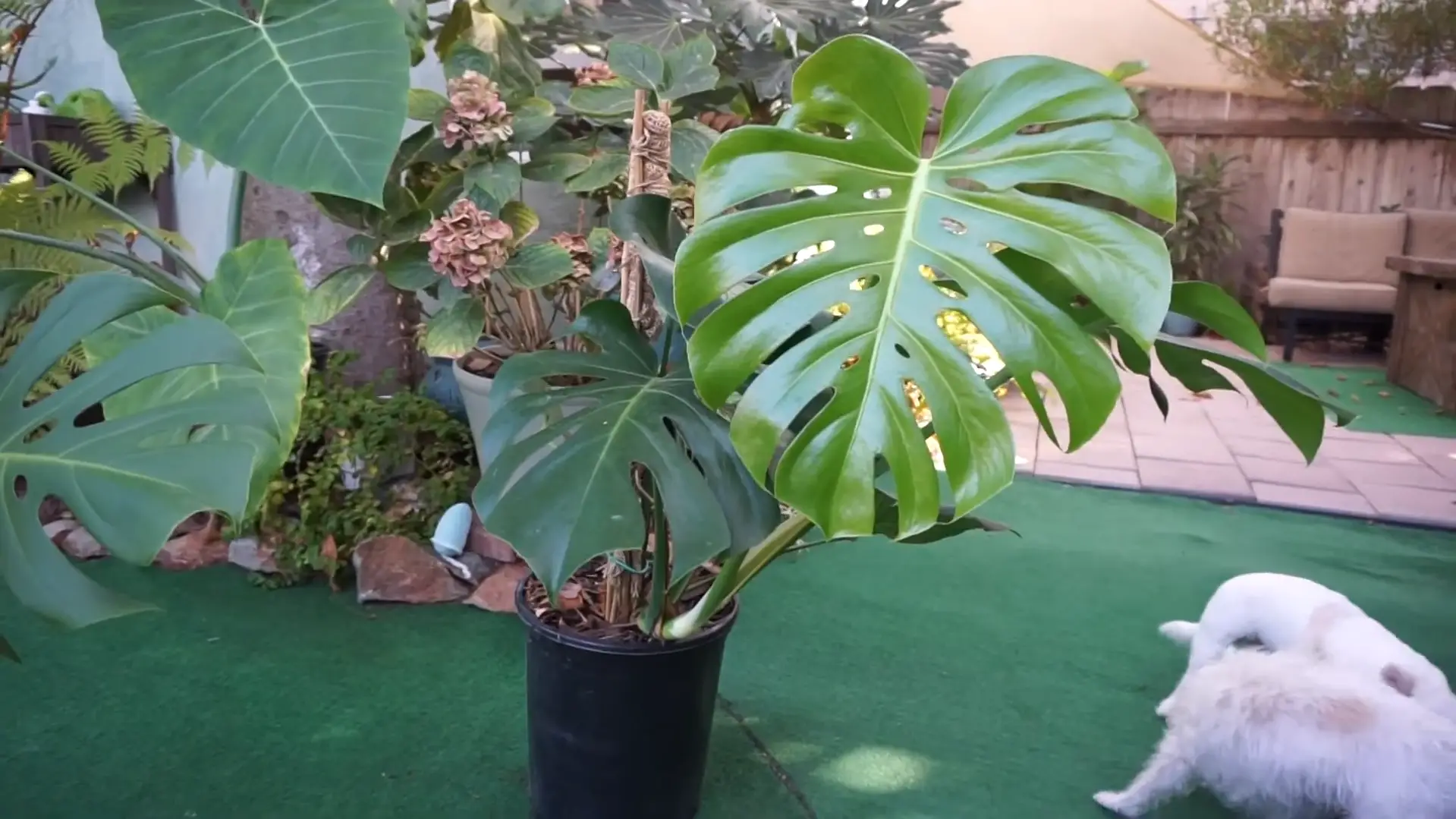
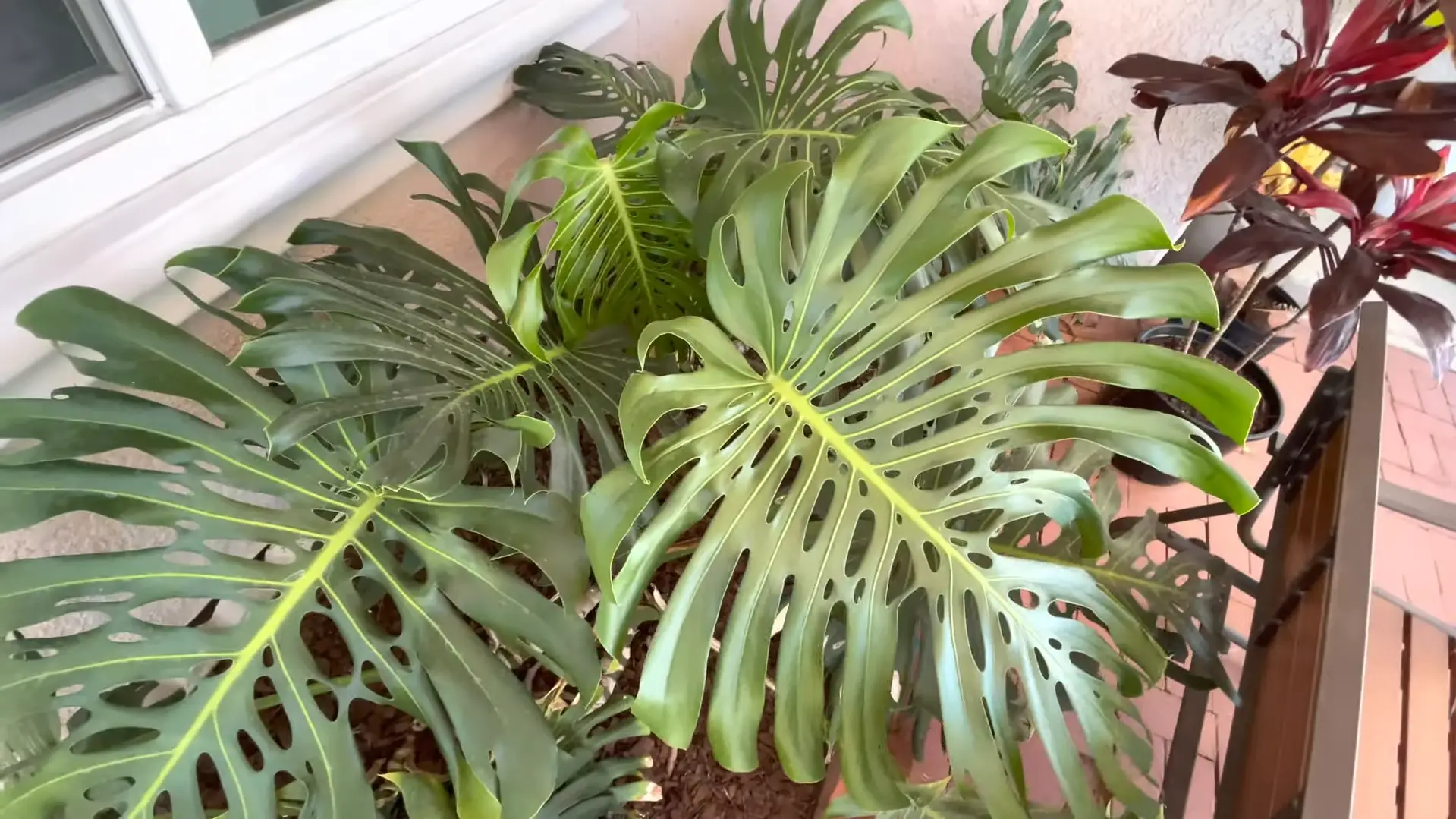




Leave a Reply
View Comments